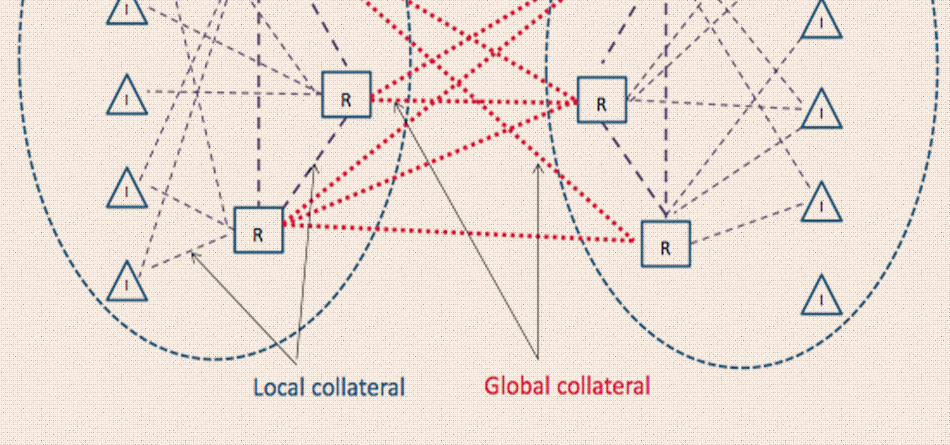

TMX Group, the Canadian exchange operator and infrastructure provider, and Clearstream Banking are launching the Canadian Collateral Management Service (CCMS) to bring automation and increase collateral mobility.
In May this year TMX Group and Clearstream Banking, the international central securities depository of Deutsche Börse Group, announced plans to develop and deliver CCMS, which will include the introduction of Canada’s first domestic triparty repo capability.
Kevin Sampson, president of Canadian Depository for Securities, told Markets Media that the collateral and funding infrastructure in Canada is in need of modernization and the market is looking to TMX to solve for that gap.
He said: “There are a lot of inefficiencies due to operationally heavy and manual processes and CCMS will bring end-to-end automation and increase collateral mobility.”
TMX started looking at this problem about two years ago and engaged the market on their needs for different features, design and solutions. The group reviewed a variety of partners to find a state of the art globally recognised leader in collateral management and Sampson said Clearstream was the obvious partner in terms of their capabilities, reputation and willingness to work with TMX in the Canadian market.
“The needs for collateral funding and mobility are fairly common across jurisdictions so Clearstream was a good fit for our market with their technology requiring minimal customization or bespoke adoption,” Sampson added. “The technology integration has been fairly seamless and the market has already been very supportive and provided a lot of validation.”
He continued that the benefits of CCMS include delivering increased liquidity to the market, while minimizing exposures and risk. Better optimization of collateral and capital, and minimizing over-collateralization, frees up capital that can be re-deployed and increases the velocity and magnitude of liquidity.
CCMS is targeted for launch in the third quarter of this year and will be rolled out in phases. The first phase will be introducing CCMS in the repo market and the Canadian Derivatives Clearing Corporation, CDCC, has a new collateralized note which will support the new platform. CCMS will then be extended into stock loan and borrow and then securities lending.
TMX is looking at opening up the test environment in the summer to allow clients to start onboarding and connect, and Sampson also expects some clients will go live on the service in the summer.
The CCMS platform will initially be a domestic solution to cover securities that are eligible in the CSD in Canada.
“We have aspirations for international securities and Clearstream has a global presence that will provide opportunities in a later phase,” added Sampson.
T+1
The US is shortening its securities settlement cycle from two days after a trade, T+2, to T+1 on 28 May 2024. Canada will also go live with cutting its settlement cycle to T+1 on the previous day, 27 May 2024. The CCMS will also support the industry shift to T+1 by introducing increased efficiencies and collateral mobility, while reducing operational risk.
Canada recognised the need for new critical infrastructure in the collateral and security funding market for quite some time and the project was initiated well before the T+1 discussions according to Sampson.
“CCMS provides an instantaneous triparty service because it is integrated with the Canadian central securities depository (CSD), which also provides a lot of advantages in a T+1 environment,” he added.
Sam Riley, chief executive of Clearstream Securities Services, said in a statement: “CCMS will deliver increased liquidity and efficiency while minimizing exposures, supporting the Canadian market on its endeavor to move to T+1. Clients will also benefit from Clearstream’s industry-leading technology and digital innovation, such as the cloud-based, digital collateral schedule capability known as OSCAR.”
Sampson continued that TMX is also seeing a lot of demand to bring securities lending onto CCMS early next year prior to T+1.
The Canadian CSD is already T+1 compatible and there are ETFs and money market instruments that can customize settlements on a T+1 basis, but Sampson said it is extremely minimal.
“Market participants are doing most of the heavy lifting in terms of creating more automation in their workflows to accommodate a shorter settlement cycle and our systems will be ready for testing,” he added.
TMX also has another very significant project to upgrade and modernize the technology platform of Canada’s domestic central securities depository (CSD) by the end of next year in parallel with CCMS.
“I think it is a testament to our focus on ensuring that we are supporting critical infrastructure for the Canadian market,” said Sampson.
John McKenzie, chief executive of TMX Group, spoke about the changes in the post-trade modernization project in the first quarter results call in May.
McKenzie said: “As a result of the acceleration of the implementation of T+1 to May 28, 2024, and recognizing that it is a market priority, we’ll be entering a slowdown period until after the industry transition. We are currently targeting a revised launch in Q4 of 2024, while being mindful that this timing may change if there is a significant industry-wide delay in the implementation of the move to T+1 settlement.”





